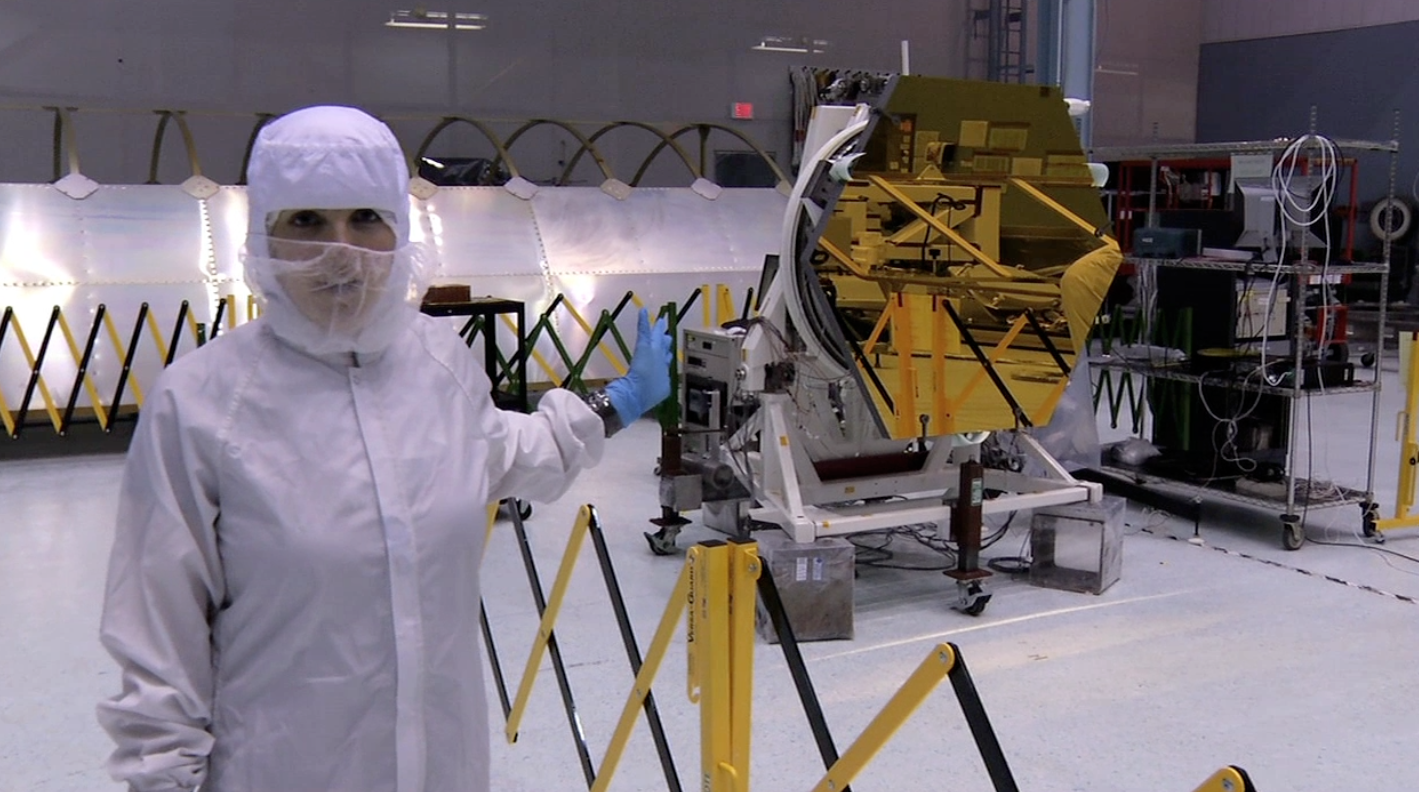
Planetary protection is a two-way street. Not only to we want to keep possible extraterrestrial microbes from reaching Earth when our space probes return home, but we also want to be sure we don’t bring organisms into space or to other planets where they could compromise scientific research results. The United Nations Outer Space Treaty, which has been in place since 1967 and signed by more than 90 countries, outlines some specific principles to guide space exploration, including, “States shall avoid harmful contamination of space and celestial bodies.”
SETI Institute scientist and former planetary protection officer for NASA, John Rummel is quoted in Endgadget as not particularly concerned:
"In my opinion, there is a reasonable possibility that nothing we could do with a sample return done robotically would bring back anything that's alive," he said.
Rummel argues that any microorganisms hitching a ride from Mars aboard a material sample would be woefully ill-equipped to handle the rigors of interplanetary flight. "We don't know what those organisms require, so the chance that we get lucky and bring them back alive is small."
That said, Rummel acknowledges the value in assuming the worst.
"The National Research Council and Space Studies Board have always maintained that we will contain [returned samples] as if they're the most hazardous thing on Earth until we prove that it's safe," he continued. "There's no upside in cutting corners."
Extraterrestrial life, microbial or otherwise, has not yet been discovered. However, with the discovery of more and more exoplanets with the possibility of having the capacity to host life, along with moons such as Titan and Enceladus, planetary protection will continue to be a matter of importance.
Edna DeVore, who is a SETI Institute Fellow and Director of Education was named Fellow of the American Association for the Advancement of Science (AAAS). AAAS awarded this fellowship in recognition of Edna’s contributions to astronomy education, and to the professional communities working to increase appreciation for and understanding of the universe. Congratulations Edna!
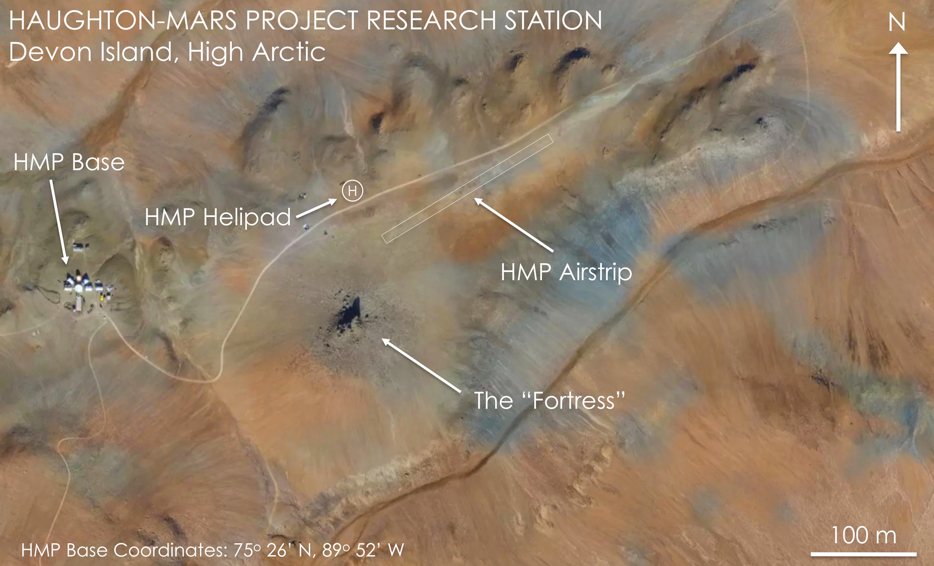 Drones on Mars
Drones on MarsThe SETI Institute has teamed up with The Mars Institute, FYBR Solutions, Inc. and the NASA Haughton-Mars Project (HMP) to research and develop an unmanned aerial vehicle (UAV) or drone technologies and applications for future exploration on Mars.
Devon Island in the Canadian arctic is considered one of the most Mars-like places on Earth, and it is the site of the NASA HMP. Pascal Lee, SETI Institute scientist and director of the NASA HMP, conducts much of his research on Devon Island. He notes:
“We’ve been investigating the use of robotic aircraft for Mars exploration on the HMP since 1998. This new partnership with FYBR will expand our investigation of the wide range of technologies and applications for UAVs on Mars.”
This new partnership will focus on operational strategies and flight system requirements for route planning, mapping and exploring hard-to-access locations on Mars.
- SETI.org: NASA Haughton-Mars Project – New Partnership on Mars Drone Applications Research
- Popular Mechanics: NASA Heads to the Arctic to Design Drones that Can Fly on Mars
- Executive Biz: FYBR-Mars Institute-SETI Team to Work with NASA on Mars Drone R&D
- Aero-News: NASA Developing Drone for Mars in the Arctic
- Extreme Tech: NASA Plans to Develop Mars Drone at Arctic Research Base
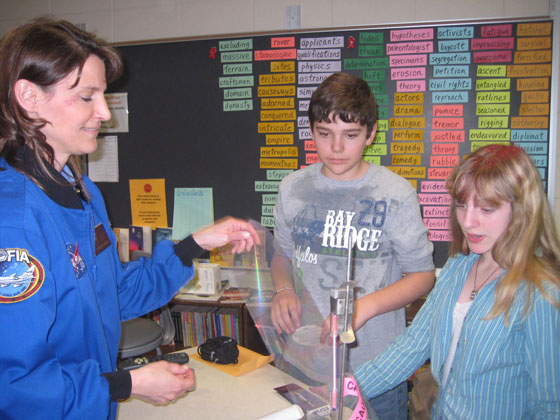 Hart District Airborne Astronomy Ambassador Science Teachers Fly on NASA’s SOFIA
Hart District Airborne Astronomy Ambassador Science Teachers Fly on NASA’s SOFIAThe Airborne Astronomy Ambassadors (AAA) program helps high school science teachers bring astronomy into their classrooms. Through webinars, workshops and online learning modules, the teachers are prepared to fly on NASA’s Stratospheric Observatory for Infrared Astronomy (SOFIA). The SOFIA flight week is an immersive experience at NASA’s research facility in Palmdale, Calif. Following training and flight week, the AAA teachers bring related science curricula to their classrooms. AAA evaluators measure impact on student learning and STEM engagement as a result of this new science curriculum that emphasizes real-world science.
Teachers from California’s Hart District were among those who participated in flights on SOFIA during October. Hart High School science teacher Judy Jennings said, "This is, basically, a playground for science teachers. I'm running around trying to get as much information as I can. I have questions that students have asked me to ask astronomers, scientists, engineers. So, I'm trying to collect those answers to relay to my students."
- SETI.org: SETI Institute Announces 2017 and 2018 Educators for the Airborne Astronomy Ambassadors Program Aboard NASA’s SOFIA Flying Observatory
- KABC: SoCal Science Teachers Take Rare NASA Trip
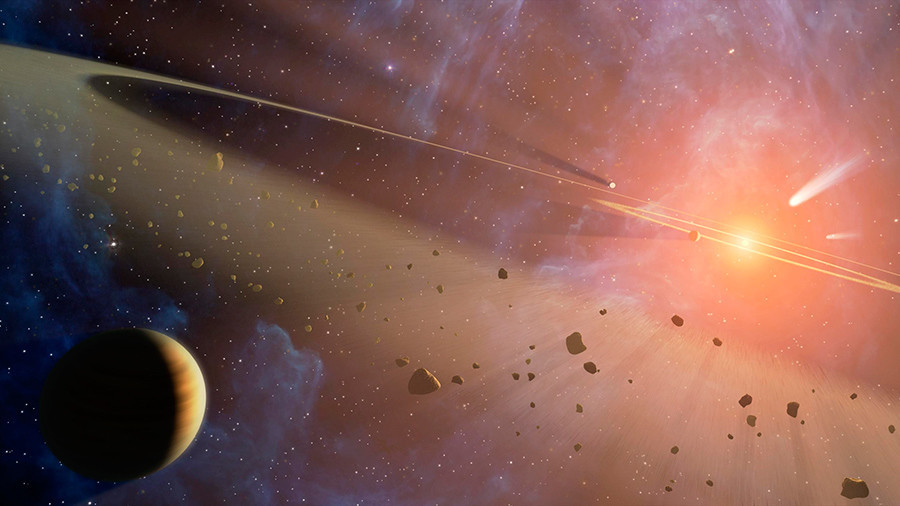 The World Didn’t End After All – Nibiru/Planet X Fail
The World Didn’t End After All – Nibiru/Planet X FailSpeculation that the world will come to a catastrophic end seem to circulate on a regular basis. In the most recent instance, Earth and a rumored planet on the fringes of the solar system, Nibiru or Planet X, were to have collided on November 19. Obviously, that didn’t happen. But SETI Institute Senior Astronomer and host of the radio program and podcast Big Picture Science, Seth Shostak, thought it was worth discussing with NASA scientist David Morrison, who detailed why this scenario would not come to pass.
- SETI.org: Big Picture Science Radio Show – Skeptic Check: Nibiru (Again!)
- The Washington Post: Please Stop Annoying This NASA Scientist with Your Ridiculous Planet X Doomsday Theories
- New Zealand Herald: Conspiracy Theorists Claim Mysterious Planet Nibiru Will Trigger Apocalyptic Earthquakes
- International Business Times: NASA Man Rejects Nibiru as Hoax but Assesses Possible Damage
- The Indian Express: NASA Scientist Debunks Doomsday Rumours Over Mysterious Planet Nibiru
- NewsHub: NASA Scientist Debunks Popular Nibiru Conspiracy
- Express: Nibiru Doom – NASA and SETI Scientists Finally Break Silence About ‘Planet X Threat’
- RT: ‘No Evidence Whatsoever’ That Nibiru is Coming to Kill Us Says NASA Scientist
- Daily Mail: Will the World End on Sunday? Conspiracy Theorists Claim Mysterious Planet Nibiru Will Trigger Apocalyptic Earthquakes
- The Christian Post: NASA Scientist Shoots Down Nibiru, Planet X Theory that the World is Ending Soon
- International Business Times: The World Didn’t End on November 19; Is it Because Nibiru Doesn’t Exist?
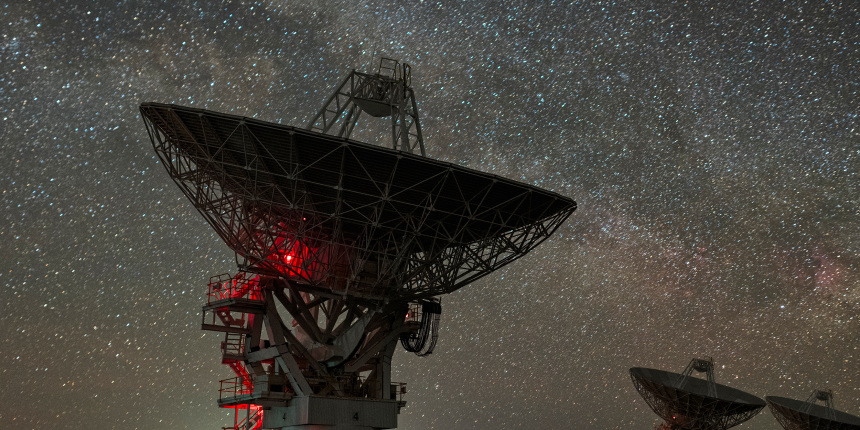 Should We Be Sending Messages to Extraterrestrials?
Should We Be Sending Messages to Extraterrestrials?Messaging Extraterrestrial Intelligence (METI), also known as active SETI, is an ongoing topic of debate. Former SETI Institute researcher Doug Vakoch now heads a group known as METI International which has just sent a message to a nearby star system that may have an Earth-like planet, GJ 273 or Luyten’s Star. The message included some music as well as tutorials about geometry and the use of binary numbers. SETI Institute Senior Astronomer Seth Shostak recently wrote about the event for NBC News, noting that getting a response from potential Luytenians is probably a long shot, but that here on Earth, there will be plenty of discussion.
- NBC News: We Just Beamed a Signal at Space Aliens. Was That a Bad Idea?
- VC Star: California Group Serenades Aliens with Techno-Pop
- San Jose Mercury News: How We’ll Serenade Aliens with Music
- Business Insider: Humans Just Tried to Make Contact with Aliens – World Leading Scientists Tell Us What Would Happen if They Reply
- Smithsonian: In Attempt to Contact Intelligent Life, Group Sends Musical Signal Toward Planet GJ 273b
- Futurism: The Latest Interstellar Messages Could Receive an Extraterrestrial Response in 25 Years
- Wired: METI’s First Message is a Music Lesson for Aliens
- Newsweek: What Happens if Aliens Are Real? Astronomers Have Protocol on How Humans Should React
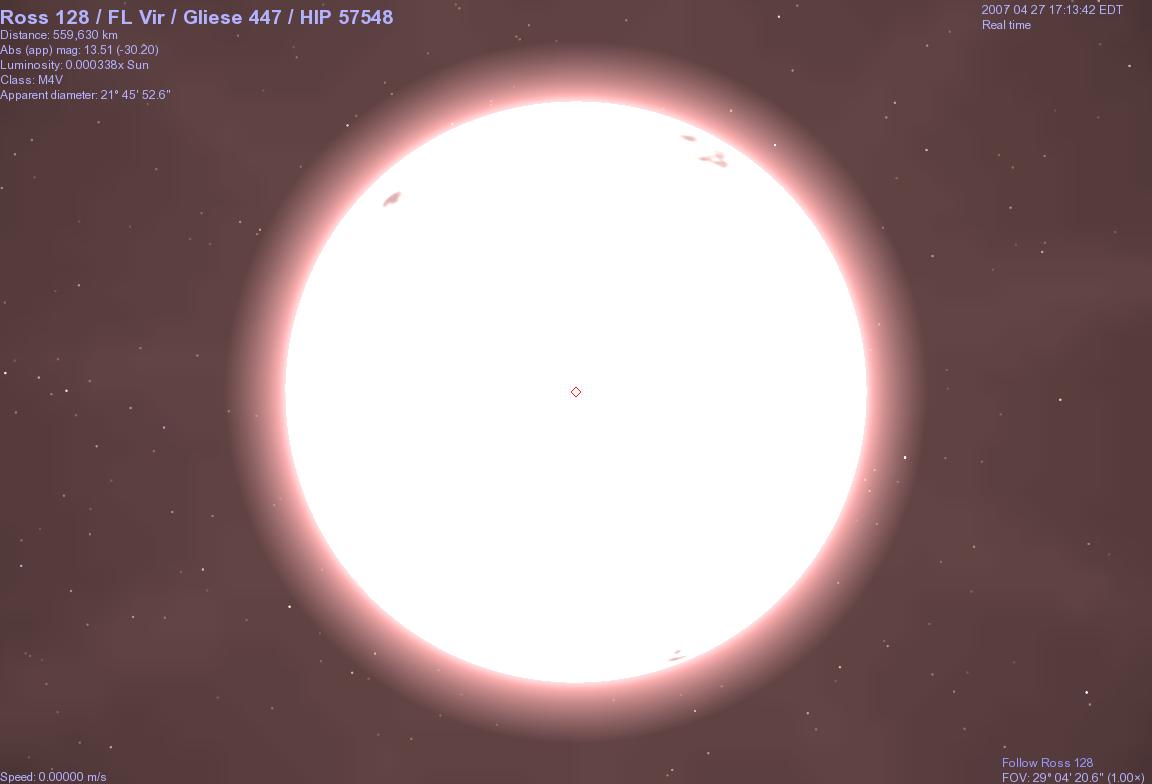 The Hunt for Life on Ross 128 b
The Hunt for Life on Ross 128 bEarlier this year the red dwarf star Ross 128 caused a stir when strange signals were detected by the Arecibo radio telescope which later turned out to be transmissions from Earth satellites. Now an Earth-sized exoplanet, Ross 128 b, has been identified 11 light years from Earth, and orbiting within the habitable zone of Ross 128.
SETI Institute Senior Astronomer Seth Shostak told NBC News, “Twenty years ago, no one would have believed that red dwarf stars — the runts of the cosmos — were good candidates for biology. But Ross 128 b is at least theoretically habitable — and what’s more, it’s extremely nearby.”
No life has been detected on Ross 128 b as yet, but investigations will continue.
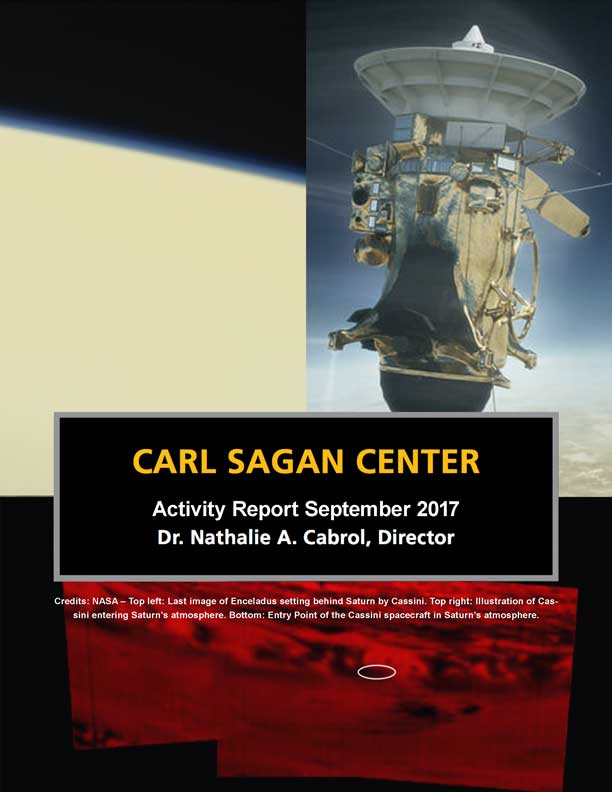 SETI Institute Activity Report October 2017
SETI Institute Activity Report October 2017The SETI Institute is a world-class center of scientific research. But that’s not all we do. In addition to the Carl Sagan Center for Research, our Center for Education and Center for Outreach work to share knowledge and learning with all humanity. The Center for Education promotes STEM education that teaches and excites children, young adults and educators, while the Center for Outreach engages with the general public through a variety of digital, print and in-person initiatives. This newly expanded activity report covers all work of the SETI Institute to provide a more holistic view of the impact of our work.
You can download the whole October 2017 activity report here.
 Big Picture Science
Big Picture ScienceLast week Wonder Women celebrated women in science including Jill Tarter (SETI Institute), Angela Saini (journalist), Kathryn Clancy (associate professor of anthropology at the University of Illinois) and Antonia Franco (executive director, Society for the Advancement of Chicanos/Hispanics and Native Americans in Science). There was also a Facebook Live with Seth Shostak and Molly Bentley discussing the show, and that video can be found on the SETI Institute’s Facebook page.
This week’s encore presentation of Time Travel Agents wonders whether time travel could ever be possible.
Last week featured SETI Institute scientist Mark Showalter discussing the Frontier Worlds nicknaming campaign for New Horizons’ next flyby target, MU69.
All past Facebook Live videos can be seen on the SETI Institute’s Facebook page at https://www.facebook.com/SETIInstitute/.
- Astronomy Society of the Pacific: December 5-8, St. Louis, MO Pamela Harman will speak.
- American Geophysical Union: December 11-15, New Orleans, LA SETI Institute Scientist Matt Tiscareno will present research on the planetary rings of Saturn and the Cassini mission. Other SETI Institute scientists participating will include Nathalie Cabrol, Franck Marchis, and Pamela Harman.
- American Astronomical Society: January 8-12, Washington, DC SETI Institute scientists and staff will participate.
- Consumer Electronics Show: January 9-12, Las Vegas, NV Franck Marchis will participate





